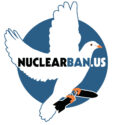There are 195 member states in the U. N.
122 countries voted to adopt the Treaty in July 2017. 1 abstained (Singapore) and 1 voted against (Netherlands).
38 countries, led by the United States, ‘boycotted’ the negotiations. Meanwhile, 11 countries took part in the negotiations but for whatever reasons did not vote. 13 more countries voted in favor of the negotiations but then did not take part in them.
Leaders of 53 countries signed the treaty when it opened for signatures in September 2017. As of September 2022, 91 countries has signed the treaty. (Don’t worry — it’s normal for a treaty to take a while to gather signatories.)
To date 68 countries have ratified the treaty. That means that their legislatures have voted to formally validate the law. (Don’t worry – this takes even longer.)
Once 50 countries had ratified it, the Treaty entered force on January 22, 2021 as binding international law for the countries that have ratified it and are therefore “states parties” to the Treaty.
Once there is near consensus, the Treaty will have the force of customary international law, which applies to all countries, whether they sign the Treaty or not. That stigmatizes and criminalizes nuclear weapons as unacceptable to the international community.
You can follow the addition of more signatories on the ICAN website here.
